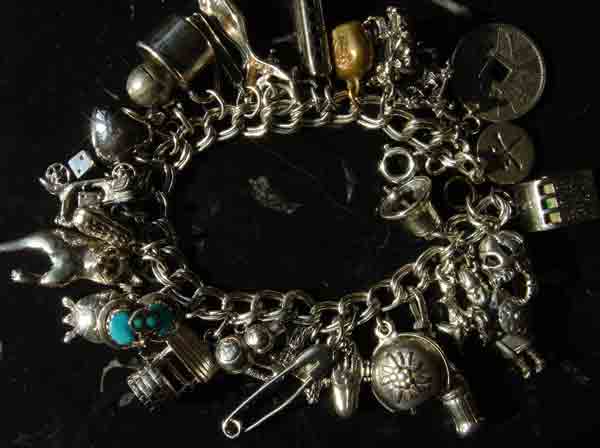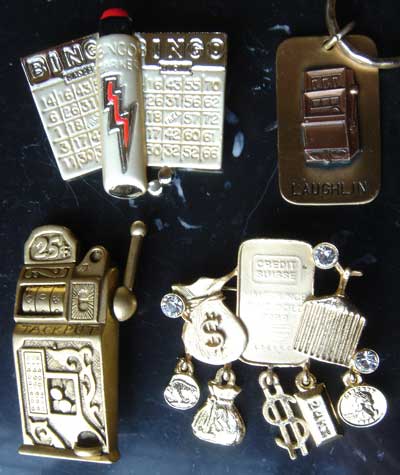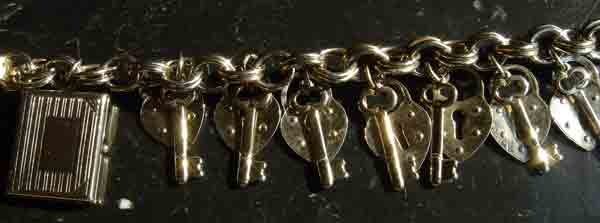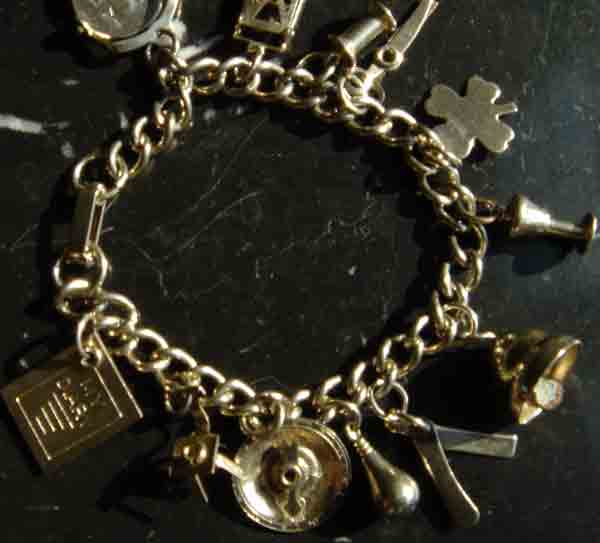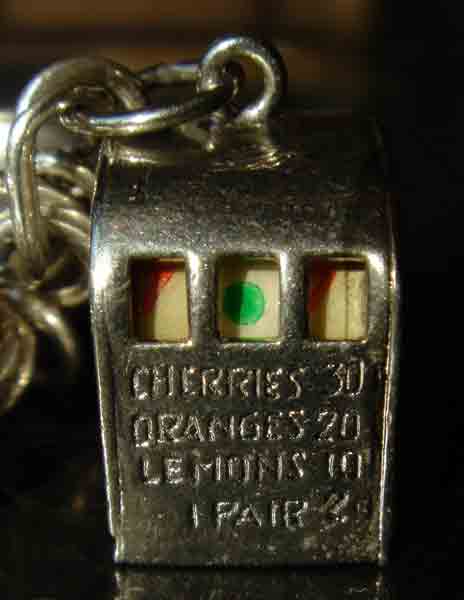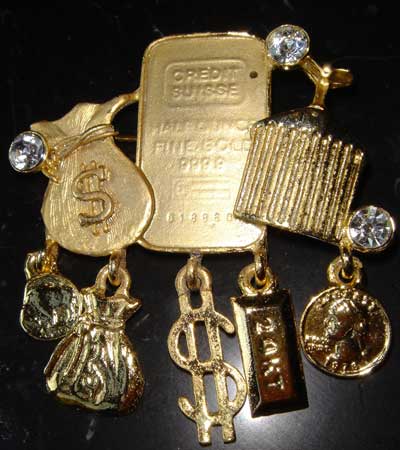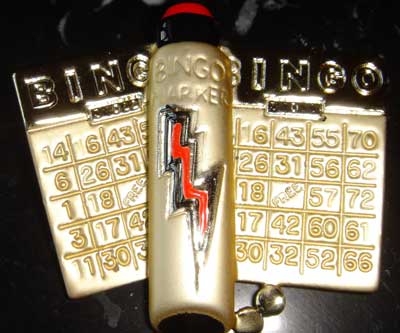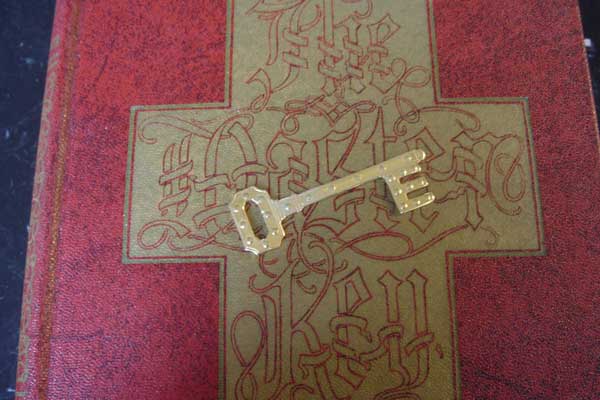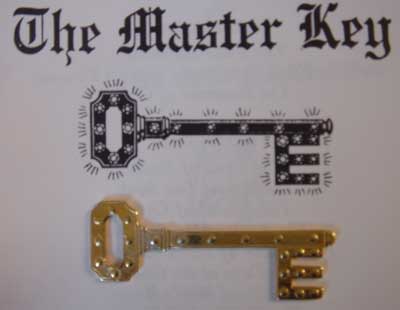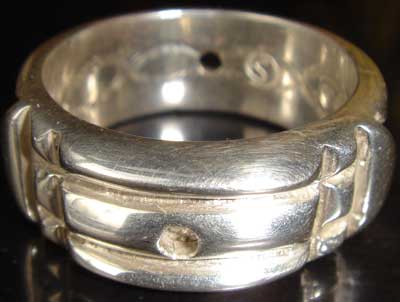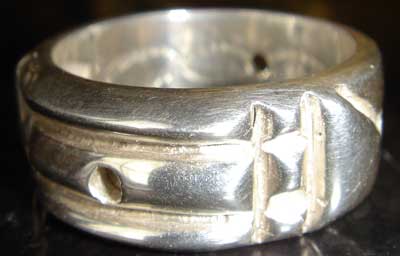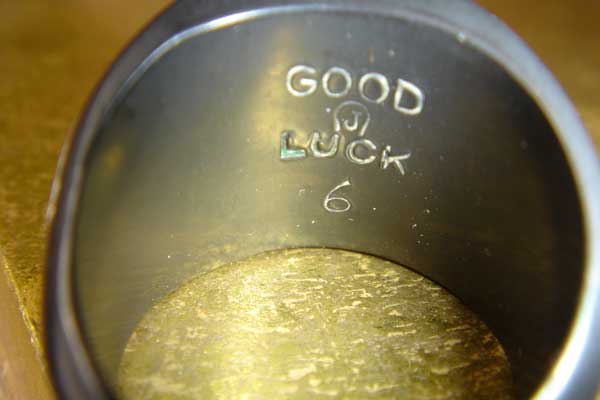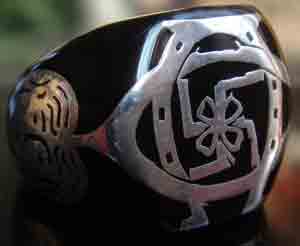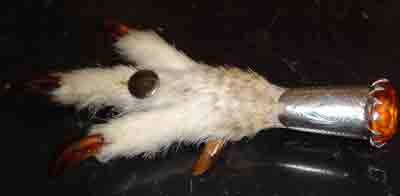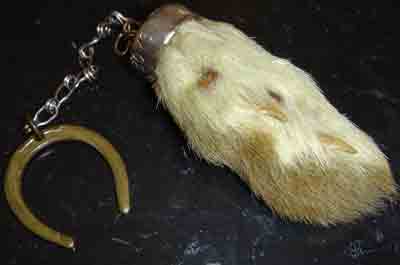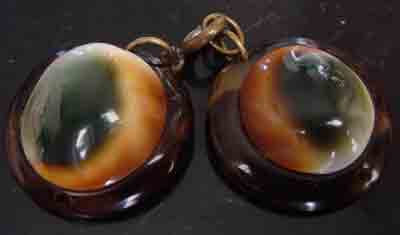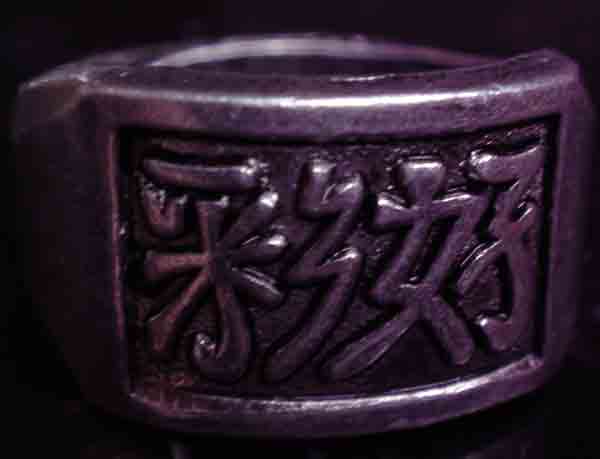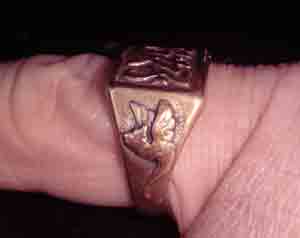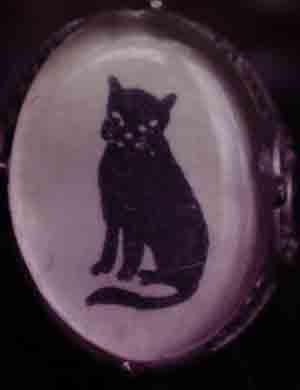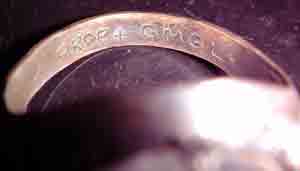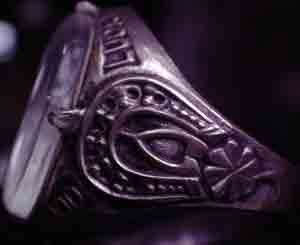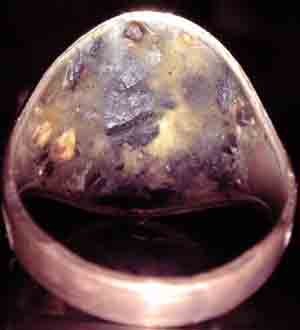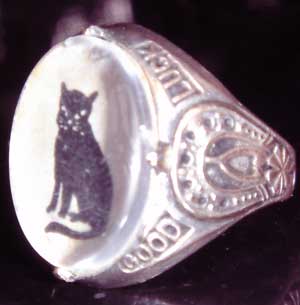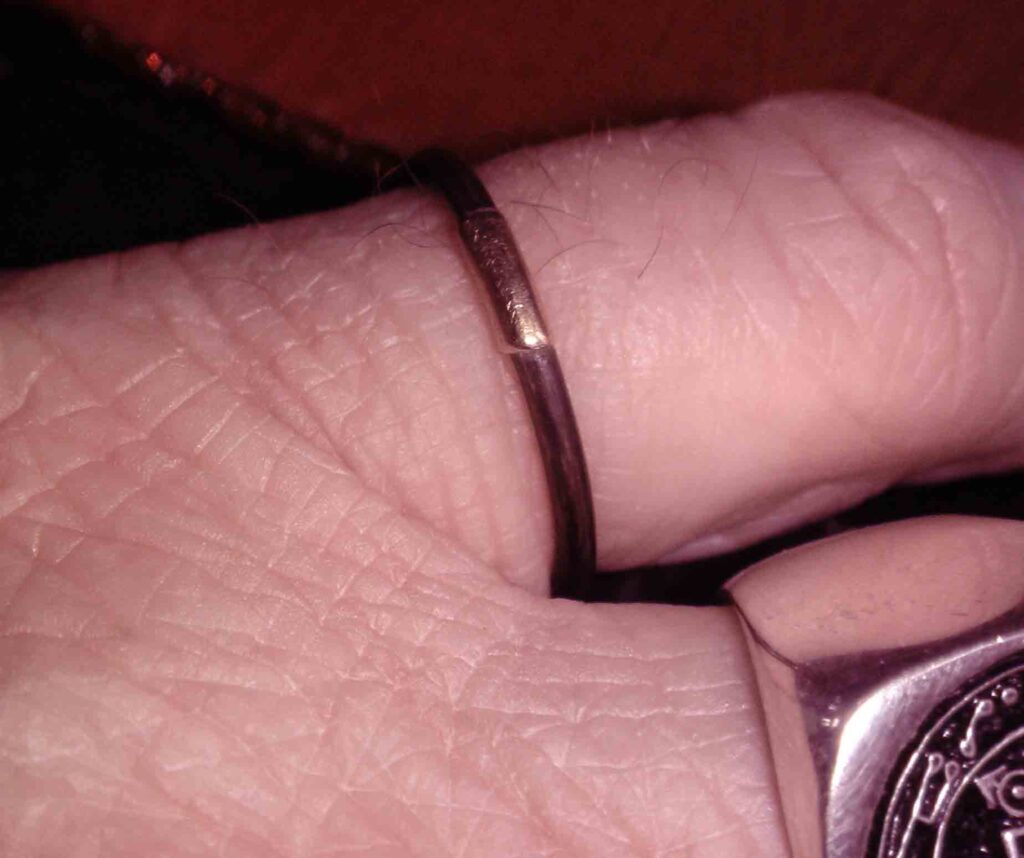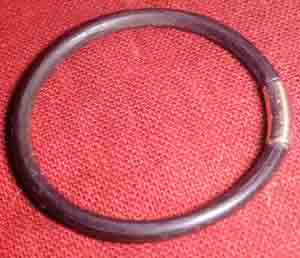Good Luck Charms
Jewelry has been used since ancient times to influence luck. Today, lucky charms are usually worn on necklaces or bracelets. From about the 1950s on charm bracelets have been a very popular item of jewelry among young women. Innumerable charms have been produced over the years.
Popular subjects for charm bracelet charms include money and gambling themes such as the ones above.
In fact, there are many jewelry items used specifically for luck in the casino or bingo parlor: pins, brooches, key chains, money clips, etc. The brooch shown below has nine money symbols -from a buffalo nickel to the grille of a Rolls Royce!
Master Key Jewelry
The Master Key is called after a popular book of the same name from the De Laurence Company, a famous spiritual supply house. According to the original instructions, the Master Key is a “reflection in the material world of the wisdom of the overworld” and the owner is advised to “grasp it in times of emergency or distress…(to bring) poise, confidence and peace of mind”. A suggested prayer is also included. This piece has been made available as a pin, a pendant and a pocket piece (shown).
Here is another item from The De Laurence Company is the Guru Signet Ring that is used on the wax seals here at the Church of Good Luck. (You would know that if you requested a membership in the Church.)
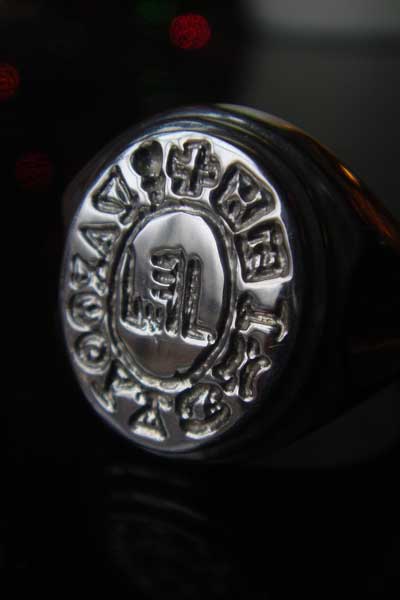
Another ring that is reported to bring Good Luck is the Atlantis ring. This design is available from a number of makers who all claim superiority. The Atlantis ring is allegedly made from an ancient Atlantean design that was uncovered in Egypt’s Valley of the Kings in the 1800s. Wearing a copy of the ring supposedly saved Howard Carter from the curse of King Tut’s Tomb.
Rider Good Luck Ring
Finally an example of the Rider Good luck ring has entered the Church’s collection!
This ring was designed by George F. Rider and a design patent was issued in 1927. Mr. Rider also designed a coin shown here containing his clover/swastika/horseshoe/wishbone device. The coin is advertised in the Sovereign Curio catalog, as is a bracelet containing the same design device as this ring.
The Rider ring is made of some sort of early plastic, perhaps Bakelite, with inlaid metal. It possesses a very strong Good Luck vibe. Immediately after purchasing the ring, Rev. Jim visited an ATM to replenish his cash supply. The machine indicated that the $200 requested was over the credit limit so the Rev. asked for $160 instead. The machine dispensed eight $20 bills – followed by another two that wafted down for a total of $200! The receipt showed $163 (including service charge) and an online check of the Church bank account confirmed that amount. This ring is miraculous! Hallelujah!!!
Some of that $40 went to buy a bottle of Novus 2 plastic cleaner, which cleaned the ring up quite nicely.
Here is a pin, evidently made by the same company, showing the Rider design. Here is a pin, evidently made by the same company, showing the Rider design.
Lucky Victorian Jewelry
Of course Victorian England was full of lucky Jewelry. Scotland is known for two particular pieces that are still produced today – the Lucky Grouse Foot and the White Heather locket.
The Grouse Foot is a classic kilt pin that perhaps was intended to help magically in the hunt for the tasty bird.
White Heather is another Lucky token in Scotland. It is often pictured on old postcards from England. Here it has been put into a small glass pendant or locket.
The Cat’s Eye or operculum is another natural curio. It is used by a species of turban snail to close the bottom opening of the shell. The Cat’s Eye was also used in Victorian jewelry.
These two examples have been set into bases of tortoiseshell and clearly show the eye-like resemblance. The Cat’s Eye is used in hoodoo and other systems to help repel the evil eye.
Another animal curio, the rabbit’s foot, is seen here attached by a small chain to a metal horseshoe. The top of the rabbit’s foot says “Poll Parrot Shoes For Girls For Boys”.
Chinese Good Luck Ring
This metal ring is a version of the Chinese Good Luck Ring sold by King, Sovereign, De Laurence and others throughout the 1930s and 40s. You can see the ad copy from King here.
The De Laurence catalog of 1931 devotes an entire page to this ring, calling it, with typical De Laurence hyperbole, the “Most Remarkable Selling Article In The History Of Jewelry Making”. The ad goes on to tell how the Broadway stars of “Tangerine”, Julia Sanderson and Frank Crumit, as well as Cecil Lean and Miss Cleo Mayfield of “The Blushing Bride” use this ring to pack the theaters and even avoid the flu. Not to mention its use by Fanny Brice, Walker Whiteside and even Al Jolson! Yes, Good Luck, Health, Happiness, Prosperity and Long Life are all provided according to De Laurence. One testimonial even describes how wearing the ring gives the wearer their very own “Chinese Spirit or Oriental Guide.” Fantastic! Here are some examples of this ring design.
Hoodoo Rings
And speaking of fantastic, the next rings we feature really are marvelous. If you have examined the Curio Catalogs on this website, you may have wondered about the fabrication of some of the exotic pieces of hoodoo-related jewelry. This ring amazingly has survived the decades as an example of these fragile items.
The sides are both decorated with a horseshoe, wishbone, four-leaf clover and the words “Good Luck”. It appears that there may have been seven small stones originally set into the horseshoes. The inside of this ring is inscribed and there is a quantity of material pressed on the inside behind the face as seen here.
The inscription reads ” + OROP + GMGL + “. The material on the inside appears to be beeswax or resin with pieces of roots and mineral embedded within. Given the nature of the ring it is likely that these are pieces of High John the Conqueror root and Lodestone chunks. In all this is a ring that radiates Power and Good Luck. it even has it’s own Good Luck celluloid ring box that also keeps a whole small High John root within the ring.
Elephant Hair Good Luck Ring
Another interesting material used to make Lucky jewelry is Elephant’s Hair. Generally the tail hair is used as it is quite large and durable. Brooches, bracelets and rings have been inset with Elephant Hair since the middle 1800s. Sometimes a single hair is used for a ring, as in this example. There is a small gold piece that gives the Elephant Hair ring its shape.
Fouled Anchor Good Luck Jewelry
Another motif used in lucky imagery, including jewelry, is the fouled anchor. The anchor is called “fouled” because it has become entangled in its rope. When this happens on a ship or boat the anchor is not able to catch the bottom to hold the boat still. Therefore the fouled anchor represents continued and unencumbered forward motion. Literally it symbolizes smooth travel, without hinderance. By extension, this concept symbolizes overcoming obstacles that impede progress. The fouled anchor is well known from its use in many emblems of the U.S. Navy.
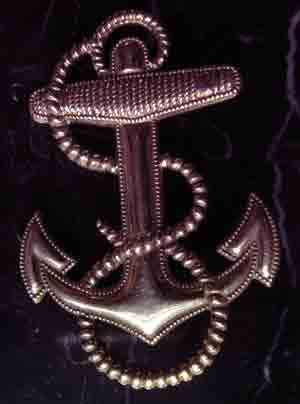
Six-Pence Good Luck Jewelry
This lovely pendant contains a 1955 British Six Pence coin in a heart-shaped setting. The six pence is known as a lucky coin and is mentioned in the famous rhyme concerning what a woman should wear on her wedding day:
“Something old, something new,
Something borrowed, something blue,
And a Lucky Six Pence in her shoe”.
A pendant such as this one would likely give the same effect, but would be more comfortable than having a coin in the shoe.
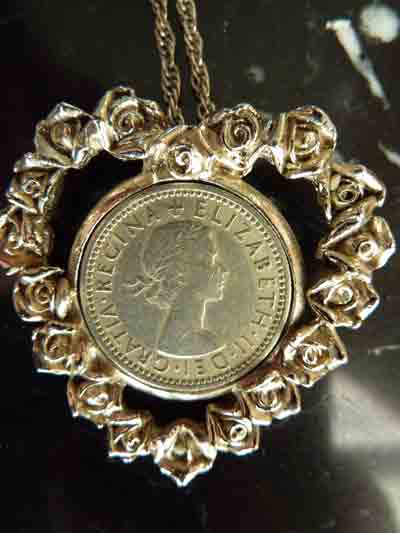
Click here to go back to the Lucky Items page.
